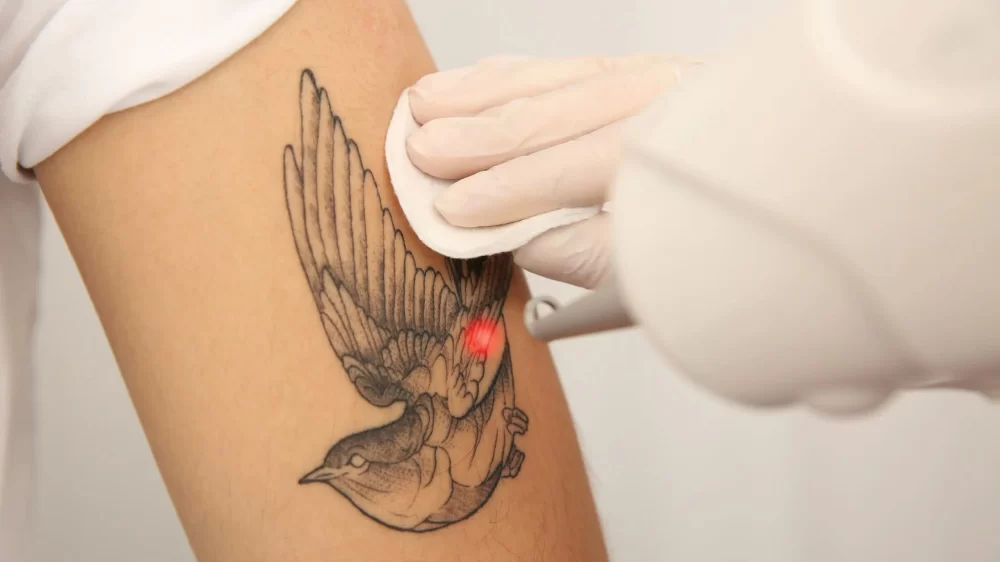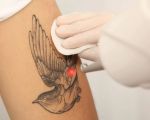
- Understanding Post-Tattoo Swelling
- Causes of Discomfort After Tattooing
- Effective Strategies to Manage Swelling and Pain
- Real-Life Experiences and Professional Advice
- Importance of Proper Aftercare Products
1. Understanding Post-Tattoo Swelling
Getting a tattoo is a thrilling form of self-expression, but it often comes with an unavoidable side effect: post-tattoo swelling. This reaction occurs because tattooing involves repeatedly piercing the skin with needles, which causes trauma to the tissue. The body’s natural inflammatory response kicks in to protect and heal the area, resulting in swelling, redness, and sometimes tenderness.
It’s important to recognize that swelling is a normal part of the healing process, especially in the first 48 to 72 hours after getting inked. The severity can vary depending on the tattoo's size, location, and your personal skin sensitivity. For example, tattoos on areas like the hands, feet, or face may swell more noticeably due to increased vascularity and thinner skin.
While swelling can be uncomfortable, understanding why it happens helps tattoo lovers remain patient and attentive to their body’s signals.
1.1 The Body’s Healing Mechanism
When tattoo needles puncture the skin, the body responds by sending extra blood and immune cells to the site. This influx promotes healing but also causes fluid accumulation, which is perceived as swelling. Additionally, the surrounding nerves may become irritated, leading to discomfort or mild pain.
1.2 Common Symptoms to Expect
Swelling is usually accompanied by warmth, redness, and mild itchiness as the skin repairs itself. However, intense pain, pus, or prolonged swelling beyond a week might indicate infection or other complications that require professional attention.
2. Causes of Discomfort After Tattooing
Discomfort after getting a tattoo isn’t just from swelling; several factors contribute to the overall sensation of pain or irritation. Recognizing these causes can help you address them effectively.
2.1 Skin Trauma and Nerve Sensitivity
Since tattooing is essentially controlled skin damage, nerve endings get stimulated or slightly injured. This causes the classic soreness and tenderness, much like a sunburn or abrasion.
2.2 Allergic Reactions and Ink Sensitivity
Some individuals experience allergic reactions to tattoo ink ingredients, especially certain pigments. This can exacerbate swelling and discomfort, sometimes requiring medical treatment.
2.3 Inadequate Aftercare
Failing to follow proper aftercare instructions often leads to prolonged discomfort. For example, exposing a fresh tattoo to dirt, excessive moisture, or harsh chemicals can worsen irritation and delay healing.
3. Effective Strategies to Manage Swelling and Pain
Managing post-tattoo swelling and discomfort requires a blend of practical care and patience. Here are several strategies proven to ease symptoms and promote faster recovery.
3.1 Gentle Cleaning and Moisturizing
Cleaning your tattoo with mild, fragrance-free soap and lukewarm water keeps the area free of bacteria without irritating the skin. After drying with a clean towel, apply a thin layer of specialized tattoo aftercare ointment or lotion to maintain moisture balance and reduce itching.
3.2 Cold Compresses for Swelling Relief
Applying cold compresses to the tattooed area can significantly reduce swelling by constricting blood vessels and numbing nerve endings. Use a clean cloth wrapped around ice packs, and limit sessions to 10-15 minutes several times daily.
3.3 Elevation and Rest
If your tattoo is on an extremity, elevating the limb helps decrease fluid buildup and swelling. Additionally, adequate rest supports your immune system, allowing it to focus on healing.
3.4 Over-the-Counter Pain Relief
Nonsteroidal anti-inflammatory drugs (NSAIDs) such as ibuprofen can relieve pain and reduce inflammation. Always follow the dosage instructions and consult a healthcare professional if unsure.
3.5 Avoiding Irritants
Stay away from direct sunlight, swimming pools, and tight clothing over the tattoo during the healing phase. These factors can irritate your skin and worsen swelling or discomfort.
4. Real-Life Experiences and Professional Advice
Consider the story of Sarah, a tattoo enthusiast who got a large floral sleeve. She experienced intense swelling and discomfort in the first three days, especially around her wrist where the skin is thinner. By following her artist’s advice to keep the tattoo clean, use cold compresses, and avoid overexertion, her swelling reduced significantly by day five.
Professional tattoo artists emphasize that every individual’s healing process differs. They often recommend investing in trusted aftercare products and encourage clients to contact them if swelling seems excessive or is accompanied by unusual symptoms.
Inked Up Dolls offers a curated selection of tattoo aftercare products tailored to various skin types and tattoo styles, helping customers find the best solutions to manage discomfort and support healing.
4.1 When to Seek Medical Help
If swelling persists beyond a week, becomes severe, or if you notice signs like fever, severe redness, pus, or extreme pain, it’s crucial to consult a healthcare provider promptly to rule out infection or allergic reactions.
5. Importance of Proper Aftercare Products
Choosing the right aftercare products plays a vital role in minimizing swelling and discomfort. Quality ointments and lotions contain soothing, anti-inflammatory ingredients such as aloe vera, calendula, or vitamin E, which support skin regeneration without clogging pores.
Many tattoo lovers overlook this step, but a product tailored specifically for tattoo healing can prevent common issues like dryness, cracking, and excessive itching. To ensure optimal results, seek products designed by professionals or endorsed by reputable tattoo artists.
For those unsure where to start, Inked Up Dolls provides expert recommendations on the most effective tattoo aftercare essentials, including gentle cleansers, moisturizing balms, and protective sunscreens specifically formulated for fresh tattoos.








